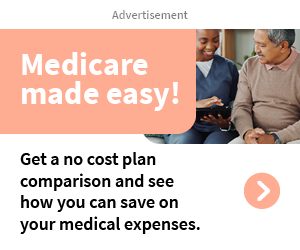Key Takeaways:
- Many people unknowingly overpay for medications, and Medicare Part D offers coverage that can reduce those costs.
- Understanding how Medicare Part D works can help consumers make informed decisions and lower their prescription drug expenses.
Why You Might Be Paying Too Much for Medications—And How Medicare Part D Can Help
The rising cost of prescription medications is a growing concern for many Americans. From routine prescriptions to lifesaving medications, the expenses can quickly pile up, making it challenging for people to manage their healthcare costs. While some people might be paying more than necessary for their prescriptions, there are resources that can help reduce these costs. One such resource is Medicare Part D, a government program designed specifically to assist with prescription drug expenses. By understanding how Medicare Part D works, consumers can avoid unnecessary costs and better manage their medication needs.
The Rising Cost of Medications
In recent years, the cost of prescription medications has surged, impacting individuals from all walks of life. Pharmaceutical advancements have led to the development of groundbreaking treatments, but these new medications often come with steep price tags. Even older, generic medications can be surprisingly expensive due to factors such as supply chain issues and manufacturing costs. For many, these rising costs can lead to difficult decisions, such as skipping doses, not filling prescriptions, or sacrificing other essential needs to afford their medications.
Why Are You Paying Too Much for Medications?
There are several reasons why someone might be overpaying for their medications. One of the most common reasons is a lack of awareness about available coverage options. Many people do not know that their current health insurance may not cover all the medications they need or that they could get better coverage through a different plan.
Another factor is that drug prices can vary widely depending on where you purchase them. Pharmacies, especially retail and online ones, can offer drastically different prices for the same medication. Without doing a price comparison, you might end up paying more than necessary. Additionally, manufacturers often release coupons and discounts, which not everyone is aware of or uses. These discounts could potentially lower costs significantly.
For those eligible for Medicare, understanding how Medicare Part D works can help ensure they aren’t paying more than they should for their prescriptions. This program provides coverage for a wide range of medications, but knowing how to navigate the enrollment process and the specifics of coverage is crucial.
Understanding Medicare Part D
Medicare Part D is a voluntary prescription drug coverage program available to individuals who qualify for Medicare. It is designed to make prescription medications more affordable by providing coverage for both brand-name and generic drugs. Unlike other parts of Medicare that are automatically available to eligible individuals, Part D requires specific enrollment, and it is offered through private insurance companies that have been approved by Medicare.
Part D plans cover a variety of drugs, organized into different tiers. Typically, generic drugs fall into the lower-cost tiers, while brand-name or specialty medications may fall into higher-cost tiers. This tiered pricing structure allows people to select the most cost-effective medications for their health needs. However, it is important to review the formularies (the lists of covered drugs) of different plans, as each plan may have its own set of covered drugs and cost-sharing arrangements.
How Medicare Part D Reduces Medication Costs
One of the primary benefits of Medicare Part D is the financial protection it offers. Without this coverage, out-of-pocket costs for prescription drugs can be overwhelming, particularly for those who require multiple or high-cost medications. Medicare Part D plans provide a structured system that includes various stages of coverage:
-
Initial Deductible Stage: During this stage, you may be responsible for paying the full cost of your medications until you meet the plan’s deductible. However, some plans have low or even no deductibles, which can help you save money from the start.
-
Initial Coverage Stage: After you meet your deductible, you’ll pay a portion of the cost of your medications, typically through copayments or coinsurance. The amount you pay will depend on the plan and the tier of the medication.
-
Coverage Gap (Donut Hole): This stage kicks in after you and your plan have spent a certain amount on covered medications. Historically, this gap was a significant cost burden for enrollees, but recent changes have reduced the financial impact. In the coverage gap, you typically pay 25% of the cost of both brand-name and generic drugs.
-
Catastrophic Coverage Stage: Once you’ve reached the out-of-pocket threshold, you enter the catastrophic coverage stage, where you only pay a small copayment or coinsurance for covered medications for the rest of the year.
The Role of Formularies and Preferred Pharmacies
Each Medicare Part D plan has its own formulary, a list of medications that it covers. This is an important aspect to review when selecting a Part D plan, as choosing a plan with a formulary that covers your specific medications can greatly reduce your out-of-pocket costs. In addition to the formulary, Medicare Part D plans often have preferred pharmacy networks. Using a preferred pharmacy within your plan’s network can result in lower costs compared to using an out-of-network pharmacy.
To optimize your savings, it’s a good idea to check whether your current medications are covered under the plan’s formulary and whether there are any cost-saving opportunities, such as using a preferred pharmacy or opting for a generic version of your medication.
Late Enrollment Penalty: What to Know
It’s important to enroll in Medicare Part D when you are first eligible, as delaying enrollment can result in a late enrollment penalty. This penalty is applied to your monthly premium and is based on how long you went without Part D or other creditable prescription drug coverage. The longer you wait, the higher the penalty, and this amount is generally permanent. To avoid this, it’s critical to sign up as soon as you are eligible unless you have other creditable prescription drug coverage.
How to Enroll in Medicare Part D
Enrolling in Medicare Part D is a straightforward process. You can join a Medicare Part D plan during your Initial Enrollment Period (IEP), which begins three months before the month you turn 65 and ends three months after your birthday month. You can also enroll during the Annual Enrollment Period (AEP), which runs from October 15 to December 7 each year.
There are a few ways to enroll in a Medicare Part D plan. You can enroll online through the Medicare website, over the phone by contacting Medicare, or directly through the private insurance company offering the plan. It’s essential to compare different plans during the enrollment period, as costs and coverage can vary widely between plans.
Maximizing Your Benefits
To get the most out of Medicare Part D, it’s essential to stay informed about your plan and regularly review your coverage. Prescription drug needs may change over time, and so can the formulary of your Part D plan. By reviewing your plan each year, especially during the Annual Enrollment Period, you can ensure that you are still receiving the best possible coverage for your medications.
Additionally, many Medicare Part D enrollees are eligible for the Extra Help program, which can further reduce costs. Extra Help is a federal program that helps people with limited income and resources pay for their prescription drugs, including premiums, deductibles, and copayments. If you think you might qualify, it’s worth applying, as it could save you a significant amount of money.
Saving on Medications Starts with the Right Plan
Medicare Part D offers crucial support for individuals who need prescription medications, but the key to maximizing savings is understanding the program’s details. By enrolling on time, choosing the right plan, and regularly reviewing your options, you can ensure that you’re not paying more than necessary for your medications.
Get the Most Out of Your Medicare Benefits
Taking advantage of the options available through Medicare Part D can significantly lower your prescription drug costs. To learn more, be sure to compare plans and seek guidance from licensed insurance agents. By staying informed, you can confidently manage your healthcare expenses.
Contact Information:
Email: [email protected]
Phone: 8085557890






